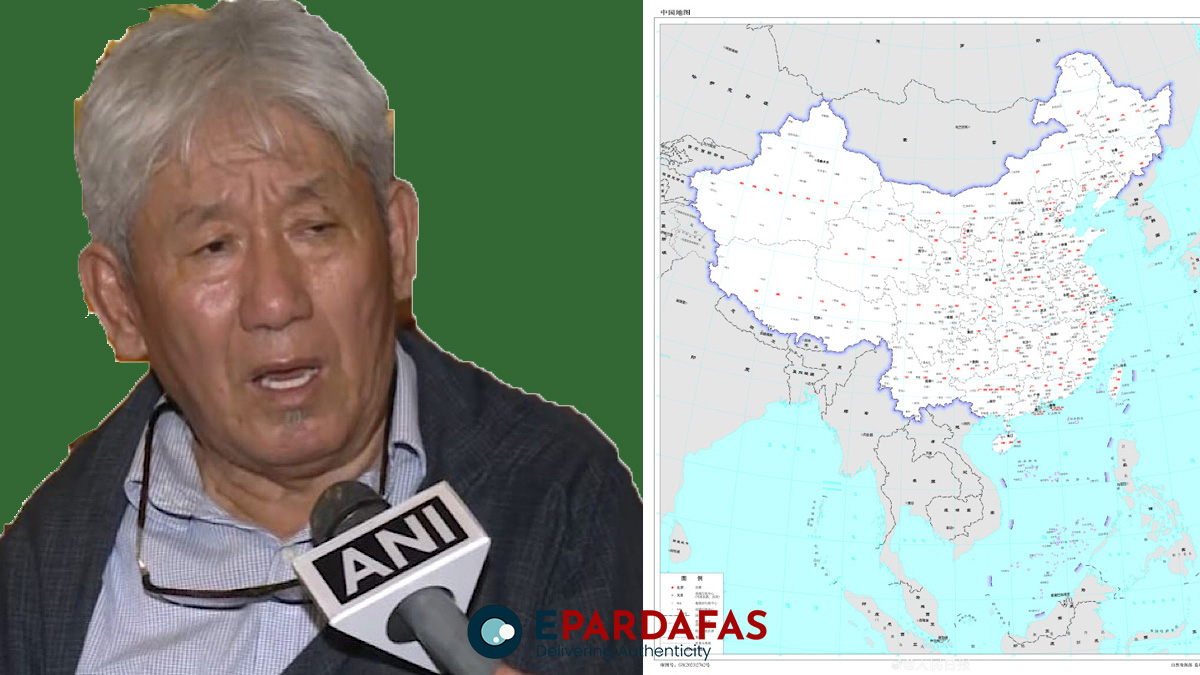
Tibetans Condemn China’s Territorial Claims in New Map

A prominent member of the Tibetan Parliament-in-exile, Dawa Tsering, has strongly criticized China’s recent incorporation of Arunachal Pradesh and the Aksai Chin region into its new map, asserting that “China can never be trusted.”
China unveiled its 2023 “standard map” on Monday, illustrating Arunachal Pradesh and Aksai Chin as part of its territory. In response, Dawa Tsering emphasized that despite China’s claims of friendship, its true intentions are veiled by deception. “Never trust China and its leaders, because they can never be anybody’s friends,” Tsering warned.
Tsering also expressed skepticism towards China’s President, Xi Jinping, and called for solidarity among South Asian countries against China’s expansionist policies.

Another Tibetan Member of Parliament in exile, Yeshi Dolma, labeled China’s move as “provocative” and suggested that it might be aimed at inciting tensions ahead of the G20 Summit next month. She highlighted China’s aggressive actions, referring to its historical invasion of Tibet in 1959 and its current border encroachments on neighboring India.
The two Tibetan MPs made these statements while engaging with ANI during their visit to the Jammu region as part of an Indian tour to raise awareness about the Tibet situation. They also met with strategic analyst Lt Gen Rakesh Sharma, who denounced China’s expansionist ambitions and criticized the new “standard map” as factually incorrect.

Lt Gen Sharma highlighted China’s expansionist history, including its capture of Tibet in 1950 and its subsequent territorial claims. He reaffirmed that historical records confirm Aksai Chin and Arunachal Pradesh, including the McMahon Line, as Indian territories.
The Indian government has responded to China’s territorial assertions by lodging a strong protest and rejecting Beijing’s claims. India’s Ministry of External Affairs stated that China’s actions have no basis and only complicate the boundary resolution process. Arindam Bagchi, the MEA Official Spokesperson, conveyed India’s protest through diplomatic channels and cautioned that such actions could hinder the resolution of the boundary issue.
China’s released map, dated August 28, asserts its claims over Taiwan, the South China Sea, and territories in its proximity. These territorial ambitions have elicited concerns from neighboring countries like Vietnam, the Philippines, Malaysia, and Brunei, all of whom have their own claims over the South China Sea.
China’s Ministry of Natural Resources unveiled the map as part of the Surveying and Mapping Publicity Day and National Mapping Awareness Publicity Week celebrations in Deqing County, Zhejiang province. This development is not isolated, as China had previously attempted similar tactics by unilaterally renaming 11 Indian locations, including mountain peaks, rivers, and residential areas, earlier this year. (ANI)











Comments